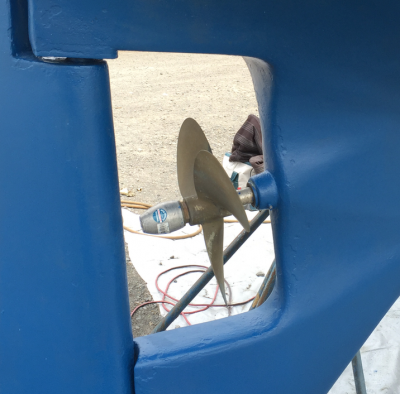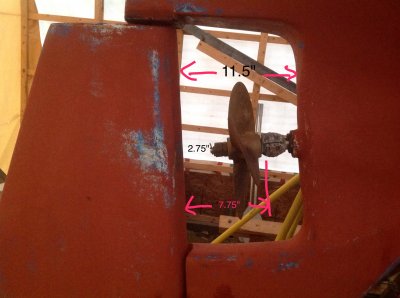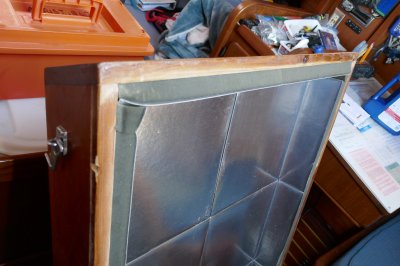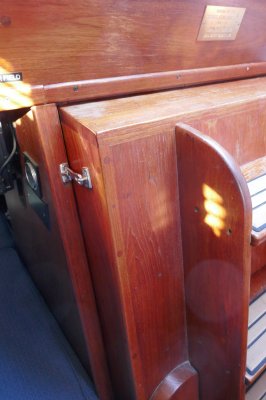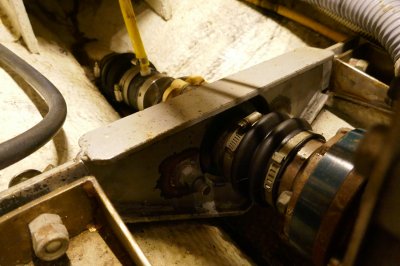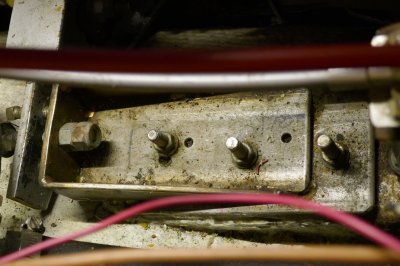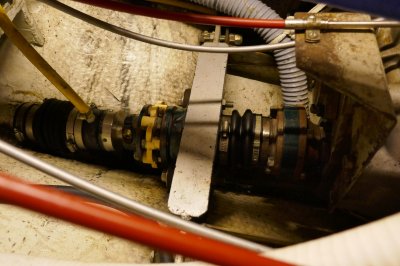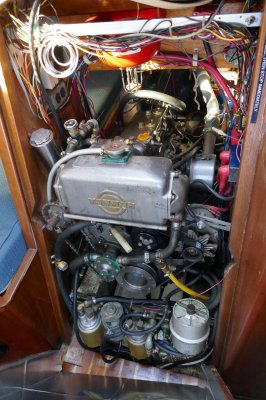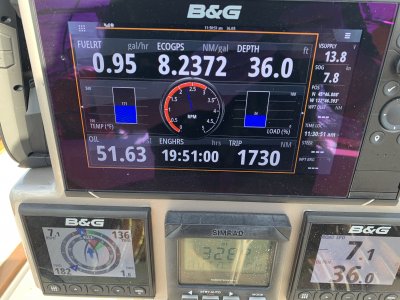Our Perkins totally shat the proverbial bed and sprayed oil everywhere on a Labor Day cruise. It was a $1k tow job to get her home, but Thank God for Boat US towing insurance! Didn't cost anything.
Unlike most folks on this forum who love their Perkins, we have had nothing but bad luck. We've pumped a lot of money into the old Perkins and he wasn't returning the love. His default behavior was spraying oil everywhere despite expensive head gasket replacements and other work. Thick clouds of smoke on startup.
So after much thinking, discussing, researching we decided we were going to repower. After all, 35+ years isn't really too bad for an engine. We are going to continue to do some long distance cruising & need reliability.
We also spent a lot of time considering which engine to replace him with. We talked with people who know much more about marine engines than we do. We narrowed it down to Yanmar 4JH45 (45 HP), Volvo D2-40 (40 HP), or Beta Marine 38 (38 HP). I think any of these 3 would have worked fine, and the Volvo & Beta have worked fine for other forum members. Also if our Perkins was not possessed by the devil, keeping it would have been much preferable.
After much reading & discussion we decided to try the Yanmar. This made us a little nervous because (that we know) nobody else on this forum has tried this Yanmar model in an M38. It's the newer high tech 'common rail' that develops up to 30,000 psi, which makes many people apprehensive. We have never shied away from embracing newer technology and we've only been burned a couple of times . Our thinking is that Yanmar is offering a 5 year warranty so if there is a flaw, they have some skin in the game too.
. Our thinking is that Yanmar is offering a 5 year warranty so if there is a flaw, they have some skin in the game too.
Flash forward 6 weeks and we've got the new engine installed and so far we love it. Granted we've only taken it out twice for sea trials. But it starts in 1 second, and doesn't blow smoke or oil everywhere. It is easily less than 1/2 the noise and near zero vibration. Compared to our Perkins which always had an apocalyptic Mad Max feeling when it started.
Here are some after/before pictures. You can guess which is 'before' and which is 'after'. Note the easy accessibility to everything. The primary and secondary fuel filters are in the upper left section. No more trying to crawl under the galley sink to replace a filter while bashing around in the sea.
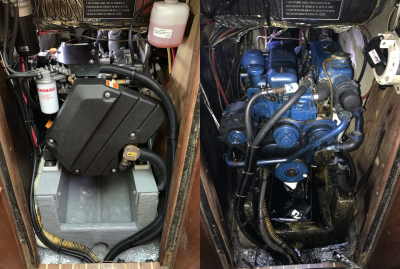
Below shows the transmission and newer dripless which we replaced a couple of years ago.
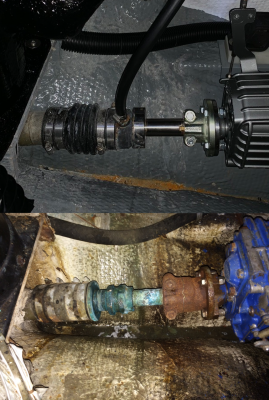
While we were doing all this engine compartment work, we also totally re-did the exhaust system. Muffler, riser, pipes, etc. The old riser was quite low and the engine company said we could get water entering the engine. Which we have had.
The engine fit quite well on the stringers used for the Perkins. They just put down some angle iron on top, and some pads made of Star Board.
The engine is 45HP, and we got the KM35P transmission which has a ratio of 2.36
This spring when we haul her for a bottom painting we plan to replace the fixed 3 blade propeller with a new feathering prop. With the old prop we have a top speed of around 6.3kt and with the new (properly sized) prop I'm expecting that to be closer to 7kt.
For those too polite to ask: the engine cost about 12 Boat Bucks*, but with all the new exhaust, plumbing, etc. the total was more around 20 Boat Bucks. Our rationale is that we are going to be doing this very active boating for at least another 10 years. And if you spread that over 10 years, it's not so bad, right???!!
I'll keep posting on here if we have any problems/issues with the new rig.
Cheers!
-Mark
* Boat Buck is a happily mysterious currency of unknown value. There are rumors that 1 Boat Buck is worth approximately 1k US dollars.
Unlike most folks on this forum who love their Perkins, we have had nothing but bad luck. We've pumped a lot of money into the old Perkins and he wasn't returning the love. His default behavior was spraying oil everywhere despite expensive head gasket replacements and other work. Thick clouds of smoke on startup.
So after much thinking, discussing, researching we decided we were going to repower. After all, 35+ years isn't really too bad for an engine. We are going to continue to do some long distance cruising & need reliability.
We also spent a lot of time considering which engine to replace him with. We talked with people who know much more about marine engines than we do. We narrowed it down to Yanmar 4JH45 (45 HP), Volvo D2-40 (40 HP), or Beta Marine 38 (38 HP). I think any of these 3 would have worked fine, and the Volvo & Beta have worked fine for other forum members. Also if our Perkins was not possessed by the devil, keeping it would have been much preferable.
After much reading & discussion we decided to try the Yanmar. This made us a little nervous because (that we know) nobody else on this forum has tried this Yanmar model in an M38. It's the newer high tech 'common rail' that develops up to 30,000 psi, which makes many people apprehensive. We have never shied away from embracing newer technology and we've only been burned a couple of times
Flash forward 6 weeks and we've got the new engine installed and so far we love it. Granted we've only taken it out twice for sea trials. But it starts in 1 second, and doesn't blow smoke or oil everywhere. It is easily less than 1/2 the noise and near zero vibration. Compared to our Perkins which always had an apocalyptic Mad Max feeling when it started.
Here are some after/before pictures. You can guess which is 'before' and which is 'after'. Note the easy accessibility to everything. The primary and secondary fuel filters are in the upper left section. No more trying to crawl under the galley sink to replace a filter while bashing around in the sea.

Below shows the transmission and newer dripless which we replaced a couple of years ago.

While we were doing all this engine compartment work, we also totally re-did the exhaust system. Muffler, riser, pipes, etc. The old riser was quite low and the engine company said we could get water entering the engine. Which we have had.
The engine fit quite well on the stringers used for the Perkins. They just put down some angle iron on top, and some pads made of Star Board.
The engine is 45HP, and we got the KM35P transmission which has a ratio of 2.36
This spring when we haul her for a bottom painting we plan to replace the fixed 3 blade propeller with a new feathering prop. With the old prop we have a top speed of around 6.3kt and with the new (properly sized) prop I'm expecting that to be closer to 7kt.
For those too polite to ask: the engine cost about 12 Boat Bucks*, but with all the new exhaust, plumbing, etc. the total was more around 20 Boat Bucks. Our rationale is that we are going to be doing this very active boating for at least another 10 years. And if you spread that over 10 years, it's not so bad, right???!!
I'll keep posting on here if we have any problems/issues with the new rig.
Cheers!
-Mark
* Boat Buck is a happily mysterious currency of unknown value. There are rumors that 1 Boat Buck is worth approximately 1k US dollars.
Last edited:


